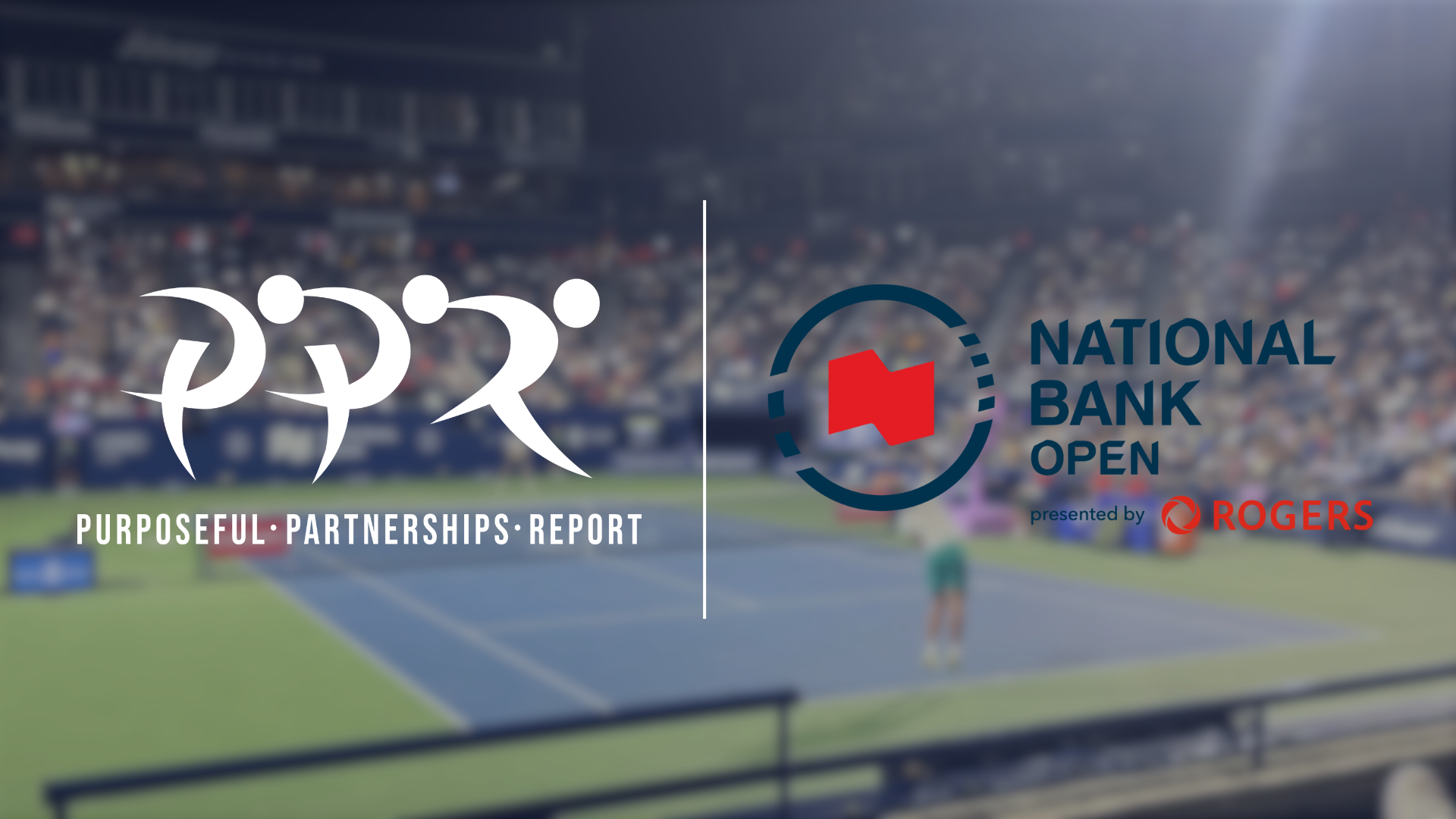How the National Bank Open Stays on Top in Toronto’s Packed Sports Scene
The National Bank Open thrives in Toronto’s packed sports scene through clear branding, fan-first experiences, and adaptability.

In a city like Toronto, where summer is stacked with concerts, Blue Jays games, TFC Games, cottage weekends, and endless festivals, carving out space for a tennis tournament might sound like an uphill battle. Yet every August, the National Bank Open doesn’t just survive, it thrives.
With the best players from the ATP and WTA rotating annually between Toronto and Montreal, the tournament brings the world’s top tennis players to Canadian courts. But what makes the NBO stand out isn’t just who’s playing, it’s how the event positions itself within a crowded marketplace.
Having interned with Tennis Canada during last summer’s tournament, I gained a behind-the-scenes look at what it takes to pull off a world-class event. Now, with a year’s worth of distance and perspective, I returned to Sobeys Stadium this year as a fan, and I can confidently say the NBO is one of the most well-run, strategically positioned, and fan-first events in Canadian sports.
Let’s break down how they do it.
Understanding Your Brand and Leaning Into It
In a crowded entertainment calendar, clarity of brand is everything. One of the biggest mistakes live events make is trying to be everything to everyone, chasing trends instead of owning a clear identity. The National Bank Open avoids that trap.
Recent campaigns like “Feel the Best of Tennis” (2024) and “Welcome to the Tennis Playground” (2025) aren’t just clever taglines, they’re the backbone of a deeper positioning strategy.
“Feel the Best of Tennis” tapped into emotion while putting a spotlight on women’s tennis. The message was clear: this isn’t just the best women’s tennis, it’s the best tennis, period. Fast-paced, dramatic, and intimate visuals pulled fans into the heart of the action, with Shania Twain’s Man! I Feel Like a Woman! serving as a perfect soundtrack to the campaign’s confident energy.
Meanwhile this year, “Tennis Playground” signaled a shift toward fun and accessibility, using the newly expanded tournament format to invite fans into something bigger. The message? This is more than a tennis tournament, it’s a summer escape, a day out with friends, and a chance to see the world’s best men’s players right in Toronto’s backyard.
What makes these campaigns so effective is how they’re woven consistently through every touchpoint, from advertising to in-stadium presentation, creating a seamless brand experience. The result is a clear, compelling identity that tells fans exactly what they’re saying “yes” to.
The Fan Experience Is the Product
One of the most impactful lessons I took away from my internship was this: the on-court product is only part of the equation, and for many fans, it’s not even the main one.
The National Bank Open understands that today’s attendees aren’t simply there to watch tennis; they’re looking for a full-day experience. And the event is intentionally designed to deliver exactly that.
The grounds feel more like a summer festival than a sports venue. Food trucks and beverage stands are spread throughout, with shaded seating areas that encourage fans to explore. Sponsor activations go beyond static booths, they’re immersive and interactive, with partners like National Bank and Rogers creating touchpoints that feel like part of the event rather than an add-on. Live music and lounge areas give fans a place to relax, socialize, and enjoy the atmosphere, even if they don’t make it to Centre Court.
For families, the 407 ETR Family Weekend turns the opening days into a welcoming, low-pressure introduction to tennis. It’s free to attend and built with activities that make the sport approachable and fun for kids who may be experiencing it for the first time.
This is fan-first thinking in action. The NBO isn’t just selling tickets to matches, it’s selling time well spent. And in a competitive market, that’s what keeps people coming back.
How the NBO Wins Without Its Biggest Names
This year, the National Bank Open faced a familiar challenge: late withdrawals from top players like Carlos Alcaraz and Jannik Sinner, both sidelined by a compressed post-Wimbledon schedule. For many tournaments, that kind of loss could sink ticket sales and media buzz.
But the NBO doesn’t hinge its success on one or two headliners. Instead, they’ve built a model that thrives by controlling the controllables and broadening what fans come for.
Spotlighting Canadian Talent: Vicky Mboko’s emotional, breakthrough performance gave fans a reason to cheer and a glimpse of the sport’s future. Add in the hometown draw of Leylah Fernandez, Félix Auger-Aliassime, and there’s no shortage of national pride to rally behind.
Storytelling in Real-Time: The tournament team excels at shifting the narrative when plans change, using content, interviews, and in-stadium moments to turn new faces into must-watch players. This isn’t a last-minute scramble, it’s a built-in strategy.
Creating Moments Beyond the Court: Even when Centre Court is quiet, the grounds buzz with energy. Food, activations, and entertainment ensure fans never feel like they “missed out” because a top seed didn’t play.
In short, the NBO has diversified its value proposition. It’s not just about who’s on the court, it’s about how the event makes you feel from start to finish. That’s why it continues to thrive, even when the biggest names aren’t there.
Final Thoughts
The National Bank Open is a masterclass in staying relevant in a crowded market, and one that other Canadian sports properties should study closely.
There’s something special about world-class tennis just minutes from downtown Toronto, but the NBO’s real strength lies beyond the baseline. Through strategy, storytelling, and an unshakable focus on the fan, the tournament doesn’t just survive in a saturated market, it thrives. And it’s only getting better.

